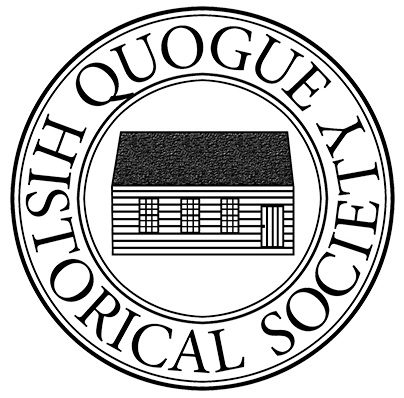Past Preservation Projects
Historic District Honors the Village of Quogue on the National Register of Historic Places
Quogue Historical Society And the Steering Committee for Preservation in Quogue
To Our Friends and Neighbors in the Village of Quogue,
We are very pleased to report that the New York State Board for Historic Preservation approved the creation of the Quogue Historic District at its meeting on December 3, 2015.
This approval, and subsequent listing on the National Register of Historic Places, represents a long-overdue recognition of the significant number of 18th, 19th and early 20th century structures that are an integral part of the charm and unique character of our Village. It also culminates more than two years of effort by the Historical Society and the Steering Committee for Preservation in Quogue. Zach Studenroth, former Southampton Town Historian, served as consultant for the project.
The National Register is the official list of buildings, structures, districts, landscapes, objects and sites that are most significant in the history, architecture, archaeology and culture of the nation.
A remarkable 248 buildings in the district are “contributing” properties, i.e., they retain a high degree of architectural and historical integrity. These buildings tell the story of 250 years of Quogue’s history—from early settlement in the 18th century to the boarding house era of the late 19th century to the summer cottages and homes of the early 20th century.
Participation Is All Voluntary. No Restrictions Whatsoever.
The Quogue Historic District was created solely by the voluntary action of community organizations, affected property owners, and other members of the community. No action was requested from the Village Trustees or any other local government authority, and therefore creation of the District and inclusion of a building in the District results in no restrictions whatsoever on the rights of the property owners to deal with their property as they wish.
Read more about the Quogue Historic District.
Quogue Historic District Maps:


Proposed Widening of Jessup Avenue
August 18, 2015
To: The Mayor and Trustees of the Village of Quogue
From: Quogue Historical Society
RE: Proposed Widening of Jessup Avenue
On behalf of the Quogue Historical Society, we are writing to express our concerns about the preliminary plan announced recently by the Mayor to widen Jessup Avenue. While we appreciate that safety issues from traffic and the state of disrepair of the curbs and sidewalks must be considered, we strongly urge that any effort to address these problems proceed with due respect for the historic appearance of this area, which is cherished by so many residents.
The existing appearance of Jessup Avenue and the Village Green is an important element of the historic “feel” of our Village. The intersection of Quogue Street and Jessup Avenue is the very heart of the Village and the view of Jessup Avenue from Quogue Street is one of the most pleasant and iconic features of our Village: a row of mainly historic commercial buildings on the right side and a lovely open space lined with mature shade trees on the left. Any material change in this perspective will change the area’s fundamental historic character, its essential “sense of place.”
Efforts to preserve the existing appearance of Jessup Avenue at this time are particularly important in light of the impending establishment of a National Register listed Historic District for the Village of Quogue. Jessup Avenue and the Village Green are in the center of the proposed Historic District, and the Village Green itself is designated as a “contributing property.” While the establishment of the Historic District will impose no legal restrictions whatsoever on the ability of owners of property to alter or even demolish their homes, we believe the existence of the District will serve as an incentive to property owners to maintain and restore their historic properties. The Village government would be setting an unfortunate precedent if it were to proceed with a plan that would result in a fundamental change in the appearance of an area that is in the heart of the Historic District.

We are pleased that the Mayor has acknowledged the concerns expressed by many Village residents and has set forth the problems that the proposed plan sought to address. We believe it would allay concerns and promote a positive outcome if the Mayor and Trustees created an advisory committee with representatives from the Historical Society and other community organizations as well as individual concerned residents (as was done with respect to the Historic District project) that would be part of the process as various options are considered going forward. Members of the community have a number of good, constructive ideas as to how to address the perceived problems without destroying the historic appearance of Jessup Avenue. We would be happy to work with the Mayor and Trustees on the formation of such a committee. We also think a public meeting to air residents’ views would go a long way to achieving a plan agreeable to all.
Thank you for your consideration.
Very truly yours,
Chester Murray
Peter J. Rothenberg
Co-chairs
QUOGUE HISTORICAL SOCIETY
Documenting Quogue’s Historic Buildings and Sites
The Society maintains a growing file of photographs and information on the history of Quogue’s houses and other buildings and sites in the Village.
In 2012, the Society undertook an architectural assessment of two of the Village’s most historic houses – Antiquity, built in 1734, and the Weathervane, the original Jessup Homestead on Quogue Street. The scope of work comprised on-site investigation, photographic documentation, and preparation of schematic measured drawings of the first and second floor plans. The project added to the scholarship on Quogue’s – and Long Island’s – historic houses.
During summer 2013, with the help of an intern, the Society created a complete inventory of the Village’s 18th, 19th, and early 20th century structures and sites in preparation for its application to New York State for creation of a Historic District.
